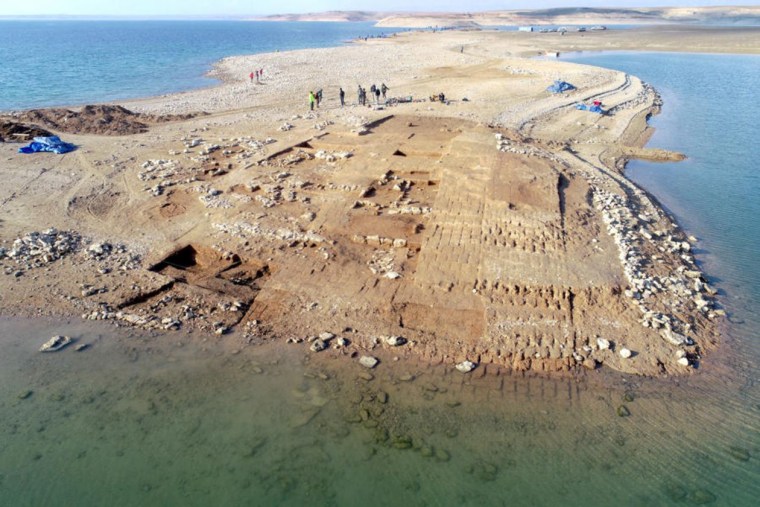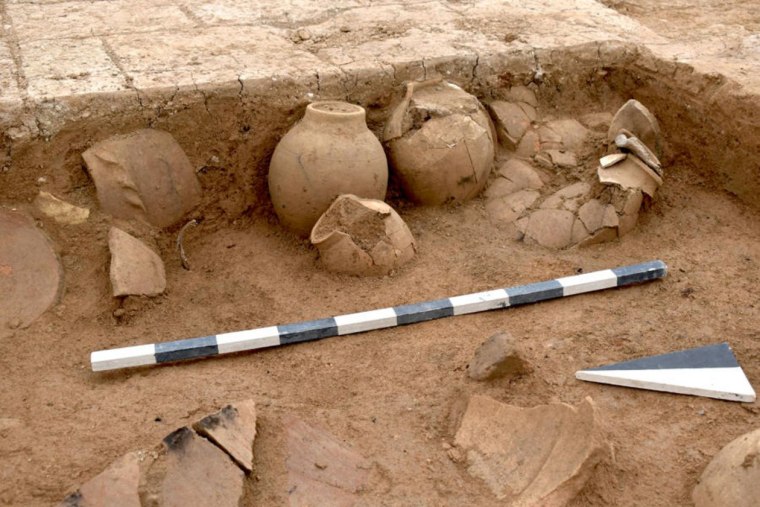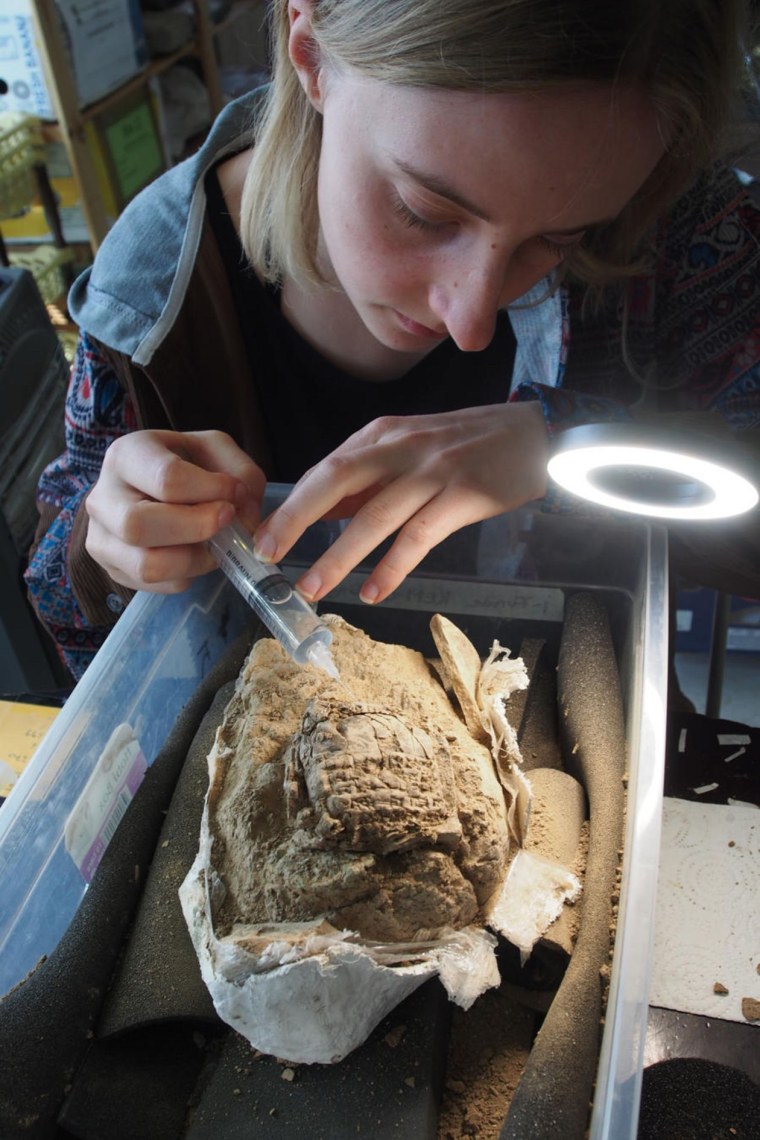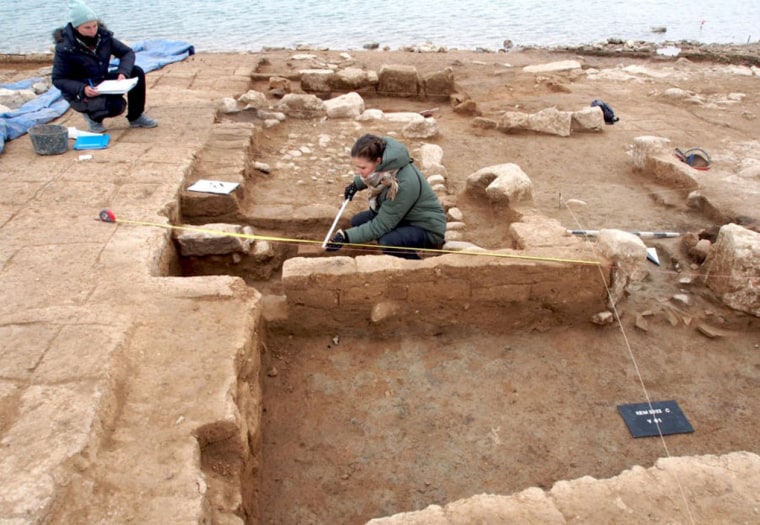The ruins of a 3,400-year-old lost city — complete with a palace and a sprawling fort — have been unearthed in Iraq after extreme drought severely depleted water levels in the country's largest reservoir, archaeologists announced Monday.
The Bronze Age settlement, long engulfed by the Tigris River, emerged earlier this year in the Mosul Dam, and researchers raced to excavate the ancient city before the dam was refilled. The discovery is just the latest example of how drought conditions fueled by climate change are yielding unexpected finds: last month, in Nevada, falling water levels in Lake Mead turned up a pair of decades-old skeletal remains.
The Iraqi ancient city, located in the Kurdistan region at a site known as Kemune, was documented by a team of German and Kurdish archaeologists. The settlement was likely a key hub during the Mittani Empire, from 1550 to 1350 B.C., said Ivana Puljiz, a junior professor of Near Eastern archaeology at the University of Freiburg in Germany and a member of the research team.
"Since the city was located directly on the Tigris, it may have played an important role in connecting the core region of the Mittani Empire, which was located in present-day northeastern Syria, and the empire's eastern periphery," Puljiz said.

Towers, a monumental palace and several other large buildings are among the surviving ruins of the fortified outpost. The archaeologists said the settlement is thought to be the ancient city of Zakhiku, once a buzzing political center in the region.
The researchers said the fortification walls — standing several meters tall in some places — are surprisingly well preserved despite being constructed of sun-dried mud bricks. The Bronze Age city was destroyed in an earthquake that struck the region sometime around 1350 B.C., according to the archaeologists. The natural disaster likely caused the upper parts of the walls to bury most of the surviving buildings, keeping them in relatively good condition over millennia, they added.
The dig at Kemune also uncovered five ceramic vessels that contained more than 100 tablets inscribed with cuneiform script. The artifacts, which the archaeologists said may be some form of ancient correspondence, date to the Middle Assyrian period, shortly after the fateful earthquake.

"It is close to a miracle that cuneiform tablets made of unfired clay survived so many decades under water," Peter Pfälzner, director of the Department of Near Eastern Archaeology at the University of Tübingen in Germany and a member of the research team, said in a statement.
The archaeological site was uncovered after water levels in the Mosul Dam were drawn down beginning in December to prevent crops from drying out. The region has been plagued by low rainfall and ongoing drought, both exacerbated by climate change.
Over the course of January and February, the archaeologists raced to map and excavate as much of the the ancient city as they could while it remained exposed.

"We were under a lot of pressure since it was unclear how much time we would have and when the water would rise again," Puljiz said. "We owe the great results to an extremely motivated and dedicated team that worked almost nonstop for several weeks in all kinds of weather including snow, rain, fog, hail and storms."
Puljiz said scientists have known about the ancient city for some time, but the site has been continuously under water since the Mosul Dam was constructed in the 1980s.
Drought in the region briefly caused part of the settlement to resurface in 2018, allowing Puljiz and her team to excavate sections of the palace. It was during that field work that she said she began to suspect the structure was part of a much larger city at Kemune.
"It was not until mid-December 2021 that the water level of the Mosul reservoir surprisingly dropped for the first time in three years," she said. "My colleagues and I knew immediately that we had no time to lose."
To help preserve the ancient settlement, the archaeologists covered the ruins with plastic coating and filled the site in with gravel, which they said will protect the walls of unbaked clay.
Puljiz added that water levels in the dam have been gradually rising since February, and the city is now submerged again.
"It is completely unpredictable when it will resurface," she said. "The only thing that is certain is that me and my colleagues will be there again when the time comes."

